Mistral Vortex Race Board 2025
22 October 2024Mistral’s Iconic Vortex SD1 Race Board
History tells us that only a few genuinely iconic SUP race board designs have ever been created. The first rules and regulations appeared at the Battle of the Paddle, a California-based event, in 2007, even if few designs qualified as bona fide race boards. Through the intervention of prone and outrigger canoe paddlers who would become competitors, their design knowledge filtered into the think tank. Ultimately, podium-winning boards fit within a narrow range of design lines, proving their merit and credibility. The Mistral Vortex is a Dutch, UK, American, and Brazilian championship-winning board that has set several world record speed times across different divisions and remains a world-class design ten years on.
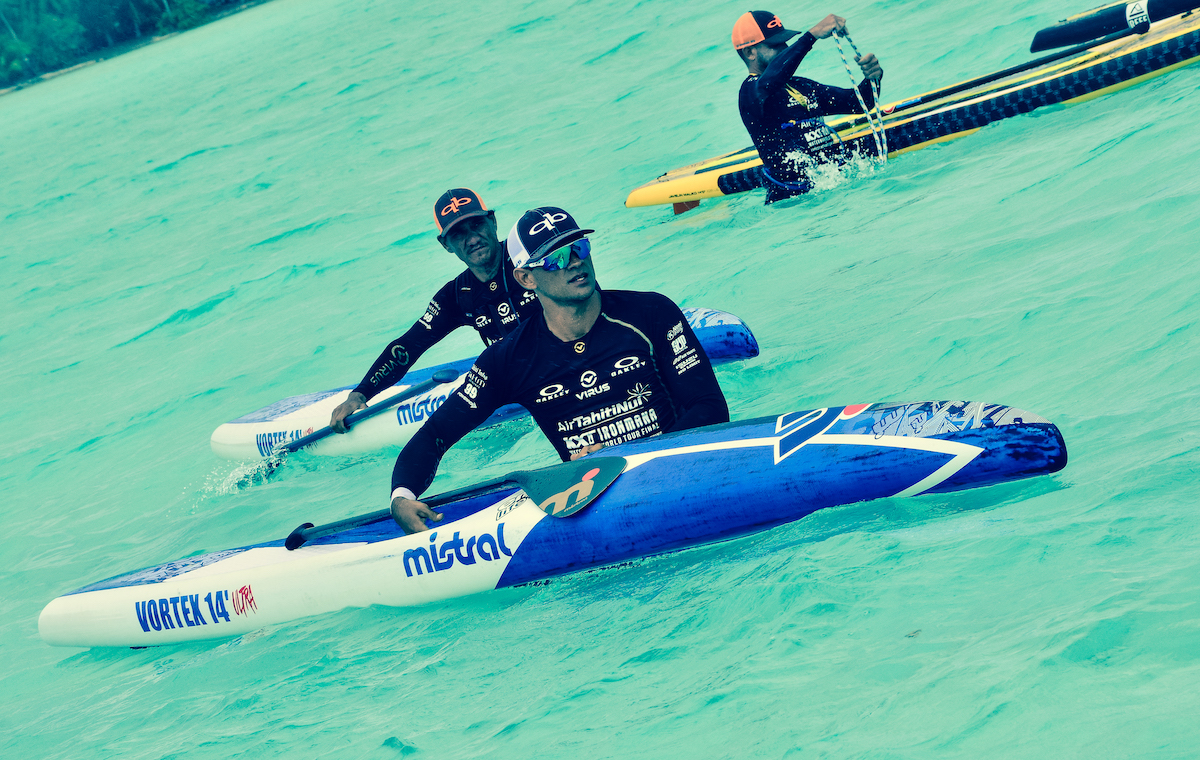
Steeve Teihotaata, winner of the 2016 ‘Around Bora Bora’ event in Tahiti, and winner of the international ‘Air France Paddle Festival’.
Mistral has an envious pedigree based on winning designs, whether from windsurfing or stand-up paddleboarding. The Mistral Vortex SD1 14’ board unquestionably falls within this category. Its design has proven credible consistently since its original creation in 2014, evolving when the brand realised it required a ground-up race board design that could contest the famous SUP 11 Cities Tour five-day event in the Netherlands to finish on the podium and bring gravitas and connection to its relatively newly acquired Dutch ownership. Today, it is synonymous with the 11 Cities event for its many podium finishes across the men's and women’s divisions and numerous international victories and medal wins.
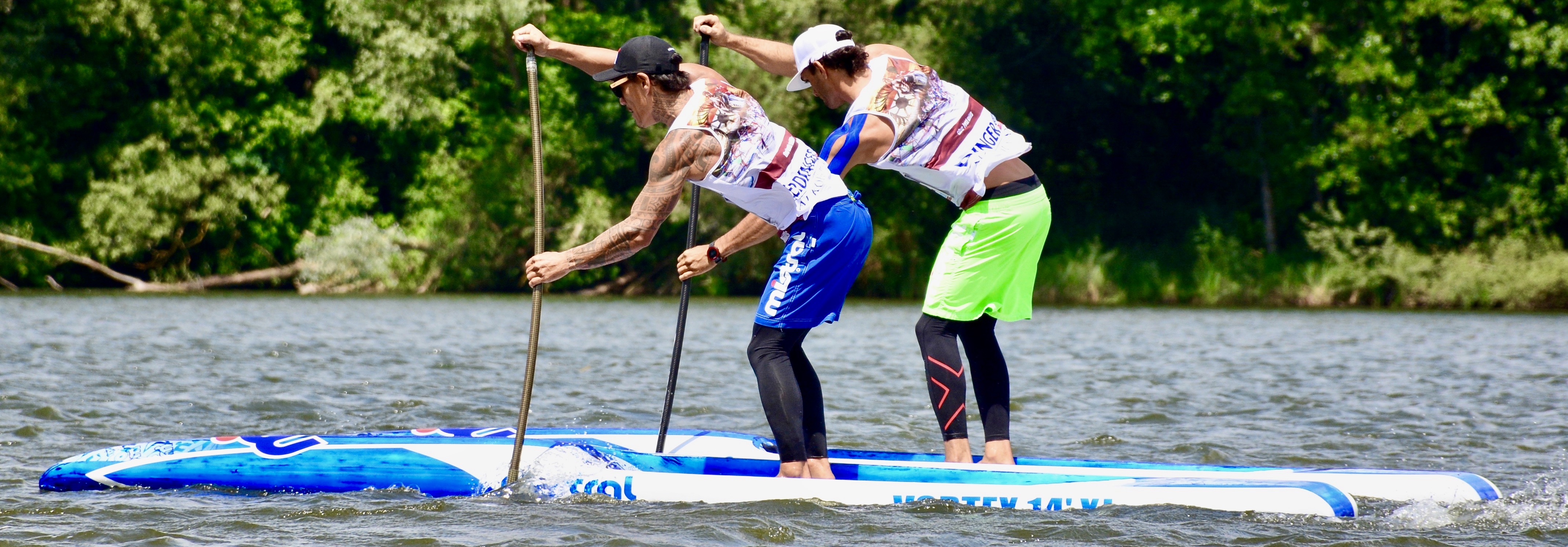
Creation and Evolution
With a long history of paddlesports and windsurfing knowledge, Steve West began working with Mistral in 2013 while living in Fiji. In September 2014, he was commissioned to develop and design a race-winning SUP board. At the time, Mistral race boards were poorly represented at the 11 Cities International SUP Tour event in the Netherlands, and the objective was to win the 2015 event in both the men's and women’s divisions as a launch point for their race program, which they went on to achieve famously.
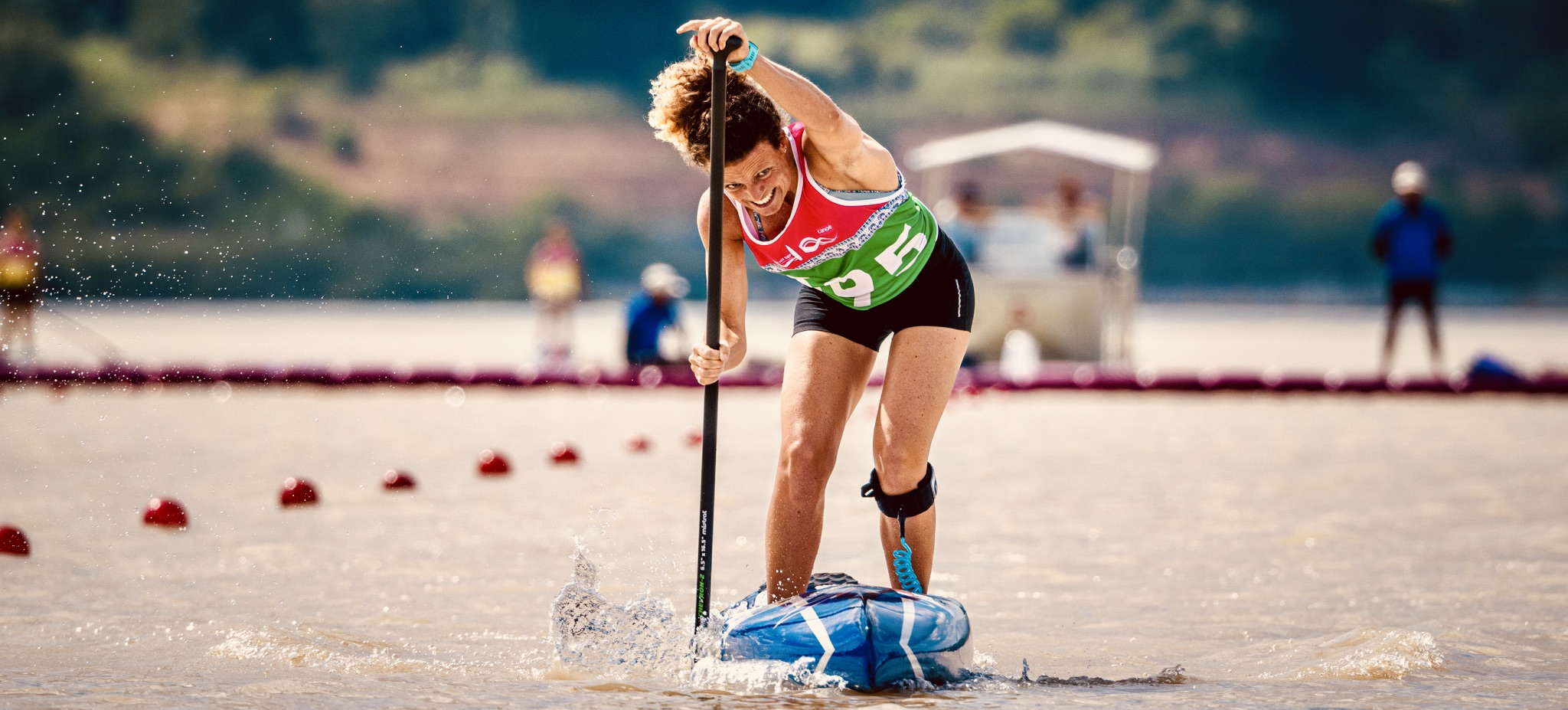
Petronella Van Malsen 2023 continues to dominate female SUP racing in the Netherlands and podium places internationally. The Vortex has been her favoured board during all her major podium finishes over the past ten years.
‘The primary issue seemed to be that former windsurfing designers were designing many SUP boards, forgetting that flat water boards should be considered non-planing boards that perform at displacement speeds for more than 95% of the time when powered only by human power and leverage. The trick was to develop a displacement hull to a point where the drag coefficients are low, and yet the board is not so unstable it cannot be ridden in comfort. This means rounded hulls in combination with flatter stable sections to balance out speed over stability without making the board unrideable’.
Working with Chris Diplock from Cornwall, England, West reverted to prone paddleboard and outrigger canoe design, which relies upon low power input levels and must be super efficient yet stable enough to be ridden with relative ease. While the original Vortex board had a shallow profile to lessen windage, it was more of a ‘wet board’ than today’s design, which nevertheless retains much of its original design elements today. However, adjustments to the nose and stand-in area depth, in particular, have been made based on feedback from riders over time.
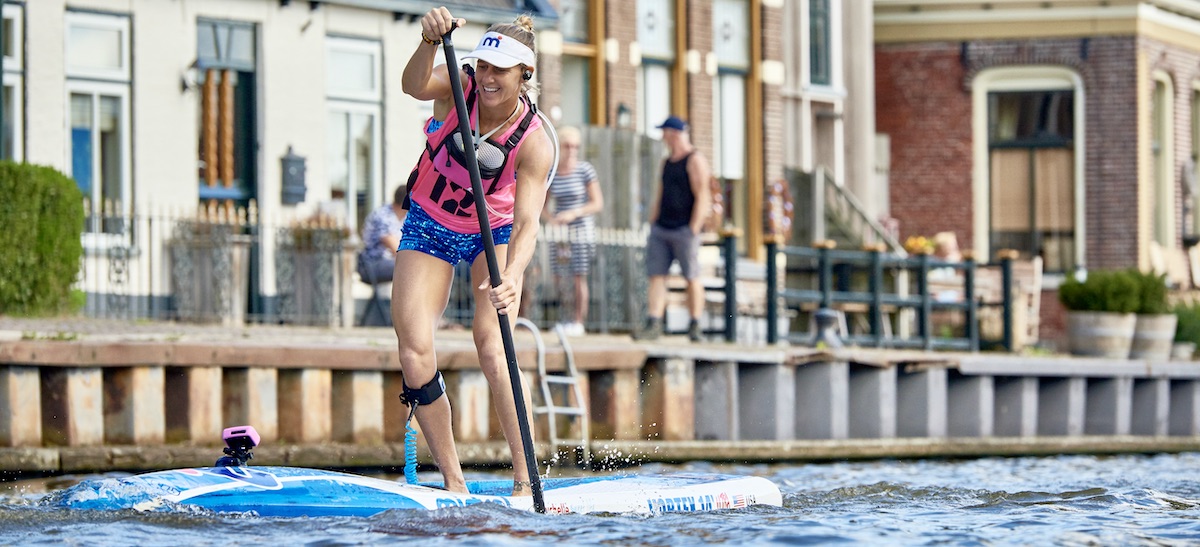
American paddler Seychelle Hattingh, multiple winner of the 11 Cities Sup Tour 2016 and 2017, paddling the original Vortex and the Vortex SD1. She set a 24-hour distance record of 110 miles using the Vortex in 2015 and won several American national Titles, including ‘The World’s Fastest Female Paddler’ in 2017.
Design Principals of the Vortex
Sectioning the board into four sections, the nose design was created to move water backwards, not forwards. ‘I knew we needed to eliminate the making of a bow wave, which the board has to push over to achieve any gains in top-end speed,’ West notes. ‘A marginally reversed nose angle limits any bow wave so that the nose has minimal drag, and as a benefit, it’s as fast under the water as it is above it, much like that of a Dolphin. When submerged, the nose can be pulled along by the pressure wave it creates. For the 2025 design, we’ve arrived at the best possible compromise for punching through waves rather than always going over them, which results in a loss of speed and stability.'
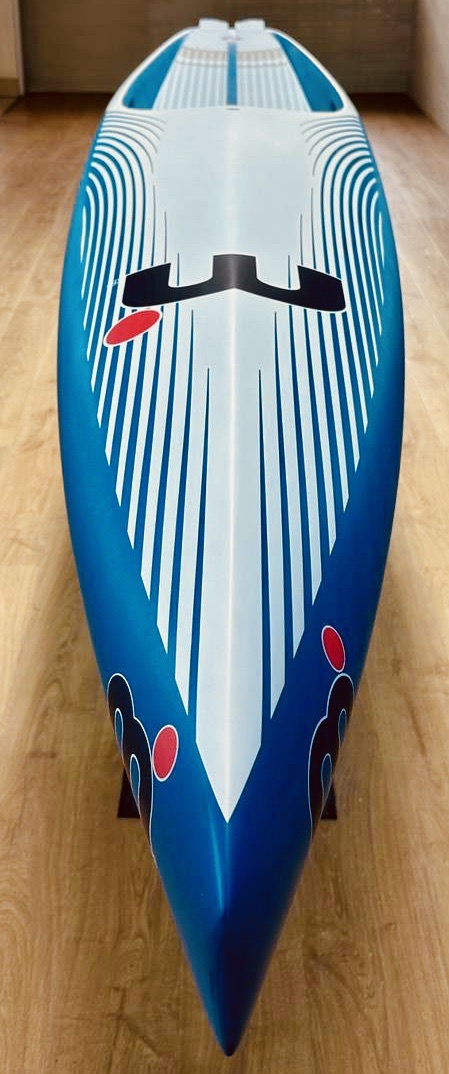
From the nose to the stand-in area, the underwater section limits drag by including a degree of roundedness to lower drag and maximise efficiency at displacement speeds instead of high planing speeds associated with windsurfing or even surfing. ‘This we have maintained throughout the years. When you raise your stroke rate or power input, you feel this advantage, and the board noticeably surges faster. With a flat planing hull, more power results in more drag and sucking down of the hull, so you don’t feel much in the way of added speed for added power or stroke rate.’ It would help if you had kinetic energy from wave action and gravity to overcome this and gain significant speed, and this is why open ocean boards require a different design approach, as seen with our Equinox boards.

Significantly, the rail shape in this first section must be rounded so the nose does not trip or track on choppy waters. It must remain loose and intuitive and not restrained by hard chines and edges, which would otherwise force the nose in a direction counterproductive to speed and control. These soft rails also add additional buoyancy where you need it.

Moving towards the standing area, the underwater shape morphs from round to flat to very marginally concave, and this is a delicate process. ‘Under the paddler’s feet, we need to keep the hull relatively flat for rider stability, but we also need to consider board width. As the board narrows, we add marginal amounts of concave, achieving two important things. The surface area is marginally increased, improving stability for a narrow board while encouraging a squeezing of water flow to promote faster run-off and slipstream efficiency.’ The rails begin to harden further back to assist with directional stability, tracking and water runoff.
Moving beyond the paddler's standing area, the concave continues, and the rails harden even more. The emphasis is on encouraging water run-off speed, with limited back-eddies and vortices at the tail that can pull back on the boards' progress forward. ‘All these factors sound easy enough to add, but the key to optimising the design is perfecting the transitional points between rounded, flat, and concave in combination with complimentary rail shapes.’
Regarding the stand-in area, it’s important to note the effects of windage and that a high-sided board will be severely affected negatively by side winds and side chop. ‘One of the factors that has made the Vortex so efficient and popular is its versatility in a range of conditions in a way that does not drain the rider's energy. Because of this, we have not been tempted to go too high on the side walls, finding a balance between stability in lowering the paddler centre of gravity through the dug-out approach, minimising windage and maximising a hull form that’s fast and free-flowing.’
Vortex SD1 Performance and Sport Models 2025
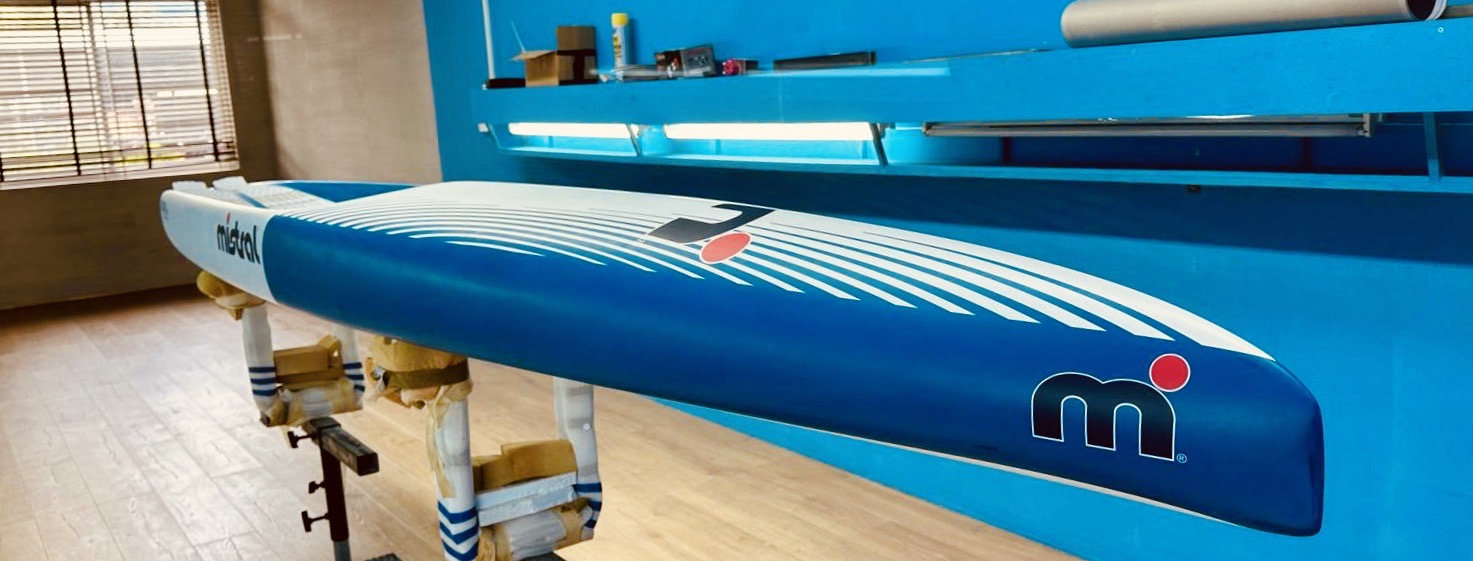
The standout feature of the 2025 Vortex SD1 has resulted in a lowering of the tail volume for improved step-back turns and lowered rail height, in addition to a new scupper deck drain system using four pairs of exit points and a customised moulded system.
‘We’ve not made changes simply for the sake of it, as it’s essential not to overcook the design elements that work, making only fine adjustments for improved rider convenience and performance.’
Mistral’s Product Manager, Alexander Mettes, comments, ‘We aim to keep the Vortex at the top of its field in design excellence for elite and up-and-coming riders. The new 2025 Vortex Performance is a super high-end carbon model in 20.0”, 21.5” and 22.5” widths, available in October retailing for €2999. In addition, we have created an affordable ‘Sport’ version retailing at €1999, also in carbon with 4oz epoxy Kevlar rails for impact resistance in 23.5” and 25.5” widths. With the wide range of widths and two price points, owning a Vortex SD1 is available to a broader range of rider abilities and budgets. Mistral’s heritage is based upon a winning mindset, and in all that we create, we must not lose focus on the need to remain relevant on the SUP racing scene as leaders, not followers.’